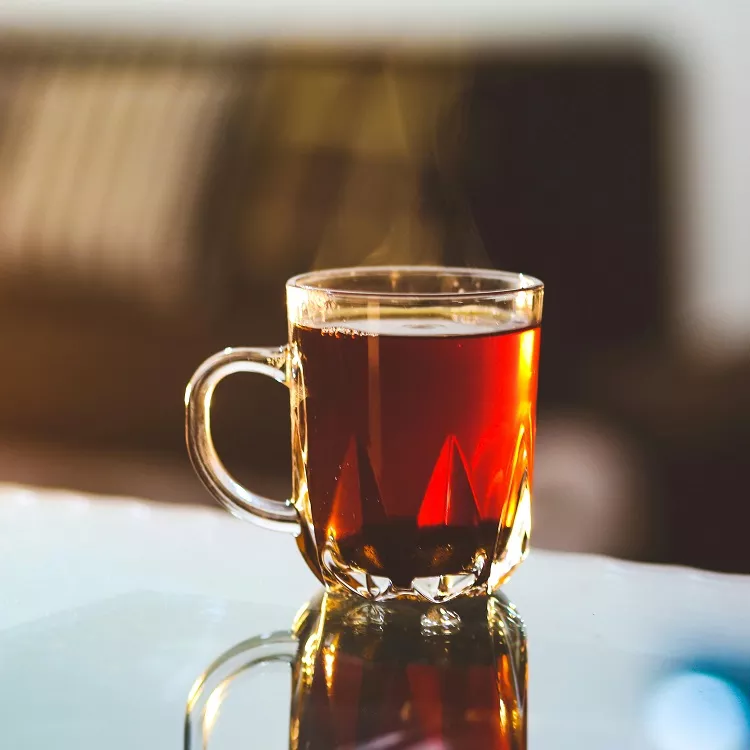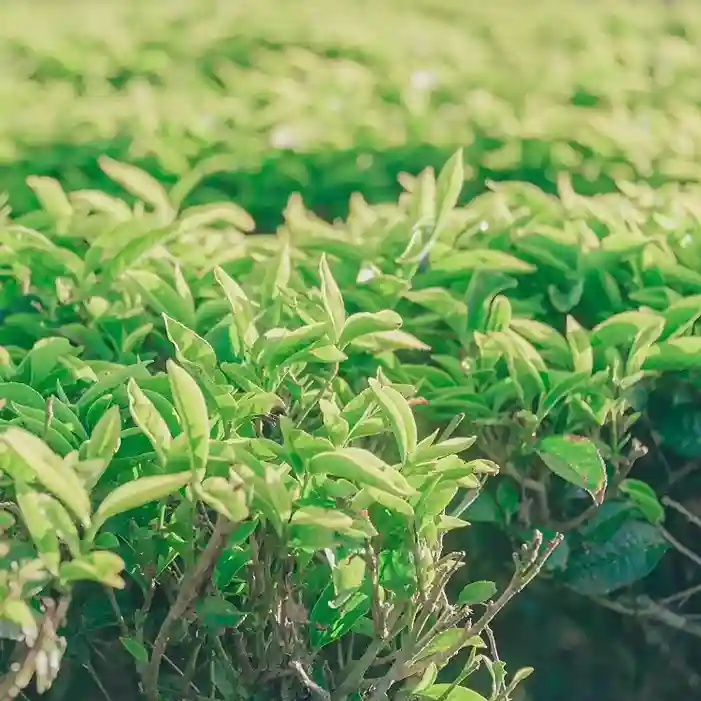Tea is one of the world’s most popular beverages, and its history stretches back thousands of years and across continents. Despite its simple method of preparation, it has great cultural significance. Different countries serve it according to their own rules and attach different meanings to the drink. Different varieties, fermentation methods, and brewing techniques create unique aromas and flavors that reflect the region of cultivation and culture.
Types of tea by degree of fermentation
Tea is classified primarily by the degree of oxidation of the leaves. This technological stage determines how the color of the finished drink will change, how rich the aroma will be, and what the flavor accents will be. Different levels of oxidation also affect the chemical composition of the leaves, and thus the tea properties.
White tea
The most delicate and easiest to process. The leaves are hardly fermented. In traditional regions of China (for example, Fuding or Zhenghe), it is partially dried in the sun. This is called solar wilting. It promotes light natural oxidation and creates a characteristic flavor.
Some producers, especially in unstable weather conditions, may carry out curing in controlled rooms to avoid spoilage of raw materials.
Due to minimal interference with the structure of the tea leaf, white tea retains its natural tenderness, light floral notes and high concentration of antioxidants.
The most famous varieties: Bai Mu Dan (White Peony), Xiliang Zhen, Silver Needles (Bai Hao Yin Zhen). They are valued for their mild flavor, purity of infusion, and natural sweetness.
Yellow tea
This is a very rare tea variety that is produced in only a few provinces in China. It is similar to green tea in terms of technology, but has one specific stage: the leaves are wrapped and kept in a humid environment after heating. This process, known as “languishing,” mellows the flavor and removes the harsh herbaceousness, adding soft honey and fruity notes. Due to the complexity of processing, yellow belongs to the premium segment.
Green tea
It is one of the most common in the world. The tea leaves are not oxidized: immediately after harvesting, they are quickly heated to stop the enzymatic processes. In Chinese technology, this is usually done by roasting in special vats, in Japanese technology – by short steaming.
Green tea is also appreciated for its beneficial properties: it contains a significant amount of catechins, supports the immune system and promotes healthy digestion.
Popular types of tea: Sencha, Gyokuro, Longjing (Dragon Well), Mao Feng, Genmaicha.
Oolong (blue-green tea)
This is the name of semi-fermented teas that combine the characteristics of green and black teas. The degree of oxidation can vary from 10% to 70%, which gives a huge palette of flavors, from fresh floral to thick caramel.
The most famous: Te Guan Yin, Da Hong Pao, Mi Lan Xiang.
They are characterized by multi-layered orchid, honey, and creamy notes.
Black tea
Fully fermented tea, which is called red tea in China because of the color of the infusion. It has a richer aroma, astringency and deep flavor. Due to its durability and resistance to transportation, it is the most widespread.
Famous varieties of tea: Assam, Darjeeling, Ceylon, Kimun, Yunnan Hong Cha.
Puer
It is a post-fermented tea that continues to mature even after being pressed. There are types of tea:
- Shen (raw) pu-erh. Over time, its flavor becomes deeper and milder, similar to aged wine.
- Shu (black, boiled) pu-erh, which undergoes artificially accelerated fermentation, has a rich flavor with earthy notes.
Pu-erh is known for its beneficial effects on digestion and detoxification.

Classification by type of tea bush
Chinese variety (Camellia sinensis var. sinensis)
Small-leafed bushes that are resistant to cool climates are the source of most of the world’s varieties. They grow in China, Japan, and Taiwan and produce delicate, aromatic teas with a complex flavor.
Assam variety (Camellia sinensis var. assamica)
A plant with large leaves originally from India. The bush loves tropical climates and high humidity. The drink made from the leaves of this bush is rich, strong, with a bright flavor. It is used as a base for many black types and blends.
Cambodian variety
A rare variety that combines the characteristics of Chinese and Assamese. It is mainly used to create hybrids. It provides soft, light-tasting teas that are rarely found on the world market.
Types of tea by geographical origin
Chinese
Chinese teas are produced in several traditional regions, each of which has its own characteristics.
Yunnan is known for its large-leaved shrubs and pu-erh.
Fujian is famous for its oolong and white tea with a delicate flavor.
Zhejiang is known for producing unfermented teas with a bright flavor and fresh aroma.
Jiangsu and Anhui specialize in green and black teas with a rich flavor palette.
Sichuan is a region of highland plantations. The leaves collected in this region are used to make tea drinks with a rich aroma and deep flavor.
Climate, altitude, soil type, and traditional methods of processing tea leaves determine the uniqueness of each variety, making Chinese products diverse and valuable on the global market.
Indian
The flavor and aroma are influenced by the local climate, the height of the plantations and the technology of leaf processing.
Regions such as Assam, Darjeeling, and Nilgiri are known for the production of Indian teas.
Assam is characterized by a strong, rich flavor.
Darjeeling has a delicate and aromatic flavor with fruity notes. Nilgiri produces refreshing, fruity flavors.
Ceylon tea from Sri Lanka
Tea from the highland regions of Nuwara Eliya, Dimbula, and Uva is known for its clear golden infusion and fresh citrus aroma.
Japanese
Japan specializes in the green variety grown using unique methods: shading (Gyokuro, Matcha) or light steaming (Sencha). They have a rich umami flavor and emerald infusion.
Other producing countries
Kenya is one of the largest exporters of strong black tea.
Turkey is known for its rich and tart Rize tea.
Georgia produces light black and light, with a soft mountain profile.

Flavor profiles of different types of tea
Tart and rich
Assam, Ceylon, and strong Chinese Hong Cha have a bright flavor. They go well with milk or spices.
Soft and delicate
White and light Chinese varieties are characterized by the delicate aroma of flowers and the freshness of spring leaves.
Sweet and fruity shades
Oolongs Mi Lan Xiang, yellow teas, and shen pu-erhs give natural sweetness.
Floral and herbal notes
Sencha, Longjing, Darjeeling, and Te Guan Yin are distinguished by a unique flavor bouquet.
The color scheme of the infusion
Light infusions
White, green and some oolongs form a clear, golden or emerald infusion.
Amber and honey shades
These colors are typical for medium-fermented oolongs and yellow teas.
Dark and rich colors
Black tea and pu-erh acquire a red to almost black hue.
How to identify high-quality and natural types of tea
Signs of quality
- Whole tea leaves or twisted needles.
- Homogeneity of raw materials.
- No dust or debris.
- Pure, natural flavor.
How to recognize natural tea
Natural tea has no harsh artificial flavors, unnatural sweetness or color.
Detection of colorants in tea
A simple test: put a pinch of tea in cold water. If the water immediately turns colored, dyes have been used. Natural tea colors water only in hot water and gradually.
Assessment of the degree of fermentation
Look at the dry leaves and infusion: the darker the color, the higher the fermentation. The aroma is also easy to tell: from grassy to deep caramel-fruity.
The most useful types of tea for daily consumption
Varieties with a high antioxidant content
Green, white, and some oolongs support cellular health and slow down aging.
What varieties to drink to support immunity
Green, yellow tea, and shen pu-erh are rich in polyphenols.
Soothing and tonic varieties
Soothing: white, light unfermented, weak oolongs.
Tonic: black, strong oolong, matcha.
Recommended for digestion
Pu-erh, oolong, and some light varieties help the gastrointestinal tract.
Practical tips for choosing
How to determine your tea preferences
The degree of fermentation and the region of cultivation determine the color, aroma and overall character of the tea.
White and green teas give lightness, freshness and delicate flavor.
Oolong is suitable for those who appreciate multi-layered flavors.
Black tea and pu-erh will delight fans of strong infusion.
Storage of different types of tea
Keep tea in an airtight container away from light, heat, odors, and moisture.
Brewing different types
White: 75-85°C, 3-5 min.
Green: 70-80°C, 1-3 min.
Oolong: 85-95°C, 1-5 minutes.
Black: 95-100°C, 3-5 min.
Pu-erh: boiling water, several quick spills.
Conclusions.
The world of tea opens up a wealth of flavors, aromas and ancient traditions. Understanding the classifications helps you choose a drink according to your mood, taste preferences, and needs. It is important to give preference to high-quality teas, experiment with brewing methods, and listen to your own feelings to enjoy every cup.







